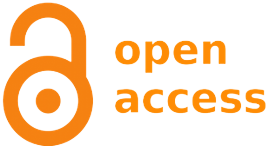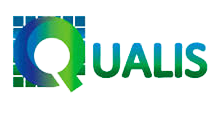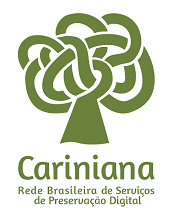The Model of Historical Education: experience Innovation for basic education.
DOI:
https://doi.org/10.5433/2238-3018.2012v18n1p219Keywords:
Historical Education, Concepts of "second order", Interaction with primary sources, Schemes (concept maps)Abstract
We present a "model of history education" as an innovation in history teaching, interaction with primary sources, the use of analytical concepts and concept maps. This model has been generated in the specialty practice of teachers of History at the Ecole Normale Superior of Mexico. The model is designed as a set of strategies, different expository teaching / transmissive and is divided into "classes interactive" workshops and projects for teaching history. Your goal is to initiate the formation of historical thinking as "situated cognition." The interactive part of a class activity to raise awareness of the primary sources in order to contextualize a topic. Articulate with the development of a structure to organize information and evaluation. Part of a diagnosis that defines "the array of school learning" student, autonomous, active, passive and disorganized, to establish the level of the learning process that is intended (practice, application) and strategies (As a matter of fact, educational and content).Downloads
Download data is not yet available.
References
ARTHUR, J.; PHILLIPS, R. Issues in History Teaching. London: Routledge. 2000.
BALLENILLA, F. Enseñar investigando. ¿Cómo formar profesores desde la práctica? Sevilla: Díada ed. 1995.
BARROS, C. Propuestas para el nuevo paradigma educativo de la historia. Reseñas de Enseñanza de la Historia. Asociación de profesores de Enseñanza de Historia en Universidades Nacionales, Córdoba, Argentina, n. 6, set. 2008. Disponível em http://www.cbarros.com/. 2007.
CHARTIER, R. La historia o la lectura del tiempo. España. Gedisa. 2007.
CLARK, A. A comparative study of history teaching in Australia and Canada. Final report. Australia: Monash University Paper. 2008.
CUENCA LÓPEZ, J. M.; GIMÉNEZ, J. E. La caja genealógica: fuentes y tiempo histórico en Educación infantil. Una propuesta para trabajar con Maestros en formación inicial. Quaderns Digitals, n. 37. 2005.
DALONGEVILLE, A. Noción y práctica de la situación problema en Historia. Enseñanza de las ciencias sociales, 2. 2003.
DÍAZ BARRIGA, F. Una aportación a la didáctica de la historia. La enseñanza-aprendizaje de habilidades cognitivas en el bachillerato. Perfiles Educativos 20, n. 82. 1998
DÍAZ BARRIGA, F. Enseñanza situada: Vínculo entre la escuela y la vida. México: McGraw-Hill. 2006.
GAETA, G. M. L. et al.. Estrategias volitivas académicas en estudiantes de enseñanza secundaria obligatoria dentro de los contextos español y mexicano. Revista Iberoamericana de Educación. v. 4, n. 59, 2012.
GARCÍA PÉREZ, F. F. La investigación en didáctica de las ciencias sociales y la construcción del conocimiento profesional de los docentes. En Ávila Ruiz Ma., P. Rivero Gracia y P. Domínguez Sanz (Org.). Metodología de investigación en Didáctica de las Ciencias Sociales. Zaragoza: AUPDCS. 2010
HEREDUC. Heritage in the classroom. A Practical Manual for Teachers. 2005
HUBER, M. La situación problema como facilitador de la actividad del profesor de Historia. Enseñanza de las ciencias sociales, n. 3, 2004.
LANGFORD, P. El desarrollo del pensamiento conceptual en la escuela secundaria. Madrid: Paidós/MEC. 1990.
LEE, P. J. Walking backwards into tomorrow. Historical consciousness and understanding history. New Orleans: American Educational Research Association. 2002.
LEE, P. J. Historical literacy: theory and research. International Journal of Historical Learning, Teaching and Research, v. 1, n. 5, 2005
MAPOSA, M.; WASSERMANN, J. Conceptualising historical literacy. Yesterday today, 4. 2009.
MARZANO, R. What Works in classroom instruction. USA: McRel. 1998.
MÉXICO. SEP. Programas de estudio 2011. Guía para el Maestro. Educación Básica. Secundaria. Historia. México: SEP. 2011.
MORA, G.; PAZ, R. O. Modelo de educación histórica. Recuperado de http://www.ub.edu/histodidactica/images/documentos/pdf/modelo_educaci on_historica.pdf 2011.
ORTEGA, A. El hombre, la gente y sus neuronas espejo. El país edición digital. 2012.
PALOMINO CURIEL, M. Los conceptos de segundo orden como estrategia para la enseñanza de la historia. Escuela Normal Superior de México. Documento recepcional. 2012.
PHILLIPS, R. Historical significance - the forgotten 'Key Element'? Teaching History, n. 106. 2012.
PRATS, J.; SANTACANA, J. ¿Por qué y para qué enseñar historia? En Enseñanza y aprendizaje de la Historia en la Educación Básica. México: SEP. 2011.
RILEY, Claire. Evidential understanding, period knowledge and the development of literacy: a practical approach to 'layers of inference' for Key Stage 3. Teaching History, n. 97. 1999.
RIVERO GRACIA, M. P. El aprendizaje multimedia de la historia: valoración de una experiencia de aula. En López Facal, R. y Velasco L. (ed.). Pensar históricamente en tiempos de globalización. Investigaciones sobre enseñanza y aprendizaje de la historia y las ciencias sociales. España: Universidad de Santiago de Compostela. 2011.
SHEMILT, D. The Gods of the Copybook Headings: Why Don't We Learn from the Past? En The Future of the Past: Why history Education Matters. Cyprus: The Association for Historical Dialogue and Research. 2011.
TREPAT, Cristófol; COMES, P. El tiempo y el espacio en la didáctica de las ciencias sociales. Barcelona: Graó. 1998.
VAN BOXTEL, C.; Jannet van Drie (2004). Historical resoning. A comparison how experts and novices contextualise historical sources. International Journal of Historical Learning, Teaching and Research, v. 2, n. 4, 2004.
VANSLEDRIGHT, B. A. On the importance of historical positionality to thinking about and teaching history. En The International Journal of Social Education, Special Issue on Historical Thinking, v. 12. 1998.
WILSCHUT, A. Canonical standars or orientational frames of reference? The cultural and the educational approach to the debate about standars in history teaching. En National History Standars. The problem of the canon and the future of teaching history. USA: Information Age Publishers. 2009.
WILSCHUT, A. A forgotten key concept? Time in teaching and learning History. Amsterdam: 21st International Congress of Historical Sciences. 2010.
WINBURG, S. Historical thinking and other unnatural acts: charting the future of teaching. USA: Temple University Press. 2001.
BALLENILLA, F. Enseñar investigando. ¿Cómo formar profesores desde la práctica? Sevilla: Díada ed. 1995.
BARROS, C. Propuestas para el nuevo paradigma educativo de la historia. Reseñas de Enseñanza de la Historia. Asociación de profesores de Enseñanza de Historia en Universidades Nacionales, Córdoba, Argentina, n. 6, set. 2008. Disponível em http://www.cbarros.com/. 2007.
CHARTIER, R. La historia o la lectura del tiempo. España. Gedisa. 2007.
CLARK, A. A comparative study of history teaching in Australia and Canada. Final report. Australia: Monash University Paper. 2008.
CUENCA LÓPEZ, J. M.; GIMÉNEZ, J. E. La caja genealógica: fuentes y tiempo histórico en Educación infantil. Una propuesta para trabajar con Maestros en formación inicial. Quaderns Digitals, n. 37. 2005.
DALONGEVILLE, A. Noción y práctica de la situación problema en Historia. Enseñanza de las ciencias sociales, 2. 2003.
DÍAZ BARRIGA, F. Una aportación a la didáctica de la historia. La enseñanza-aprendizaje de habilidades cognitivas en el bachillerato. Perfiles Educativos 20, n. 82. 1998
DÍAZ BARRIGA, F. Enseñanza situada: Vínculo entre la escuela y la vida. México: McGraw-Hill. 2006.
GAETA, G. M. L. et al.. Estrategias volitivas académicas en estudiantes de enseñanza secundaria obligatoria dentro de los contextos español y mexicano. Revista Iberoamericana de Educación. v. 4, n. 59, 2012.
GARCÍA PÉREZ, F. F. La investigación en didáctica de las ciencias sociales y la construcción del conocimiento profesional de los docentes. En Ávila Ruiz Ma., P. Rivero Gracia y P. Domínguez Sanz (Org.). Metodología de investigación en Didáctica de las Ciencias Sociales. Zaragoza: AUPDCS. 2010
HEREDUC. Heritage in the classroom. A Practical Manual for Teachers. 2005
HUBER, M. La situación problema como facilitador de la actividad del profesor de Historia. Enseñanza de las ciencias sociales, n. 3, 2004.
LANGFORD, P. El desarrollo del pensamiento conceptual en la escuela secundaria. Madrid: Paidós/MEC. 1990.
LEE, P. J. Walking backwards into tomorrow. Historical consciousness and understanding history. New Orleans: American Educational Research Association. 2002.
LEE, P. J. Historical literacy: theory and research. International Journal of Historical Learning, Teaching and Research, v. 1, n. 5, 2005
MAPOSA, M.; WASSERMANN, J. Conceptualising historical literacy. Yesterday today, 4. 2009.
MARZANO, R. What Works in classroom instruction. USA: McRel. 1998.
MÉXICO. SEP. Programas de estudio 2011. Guía para el Maestro. Educación Básica. Secundaria. Historia. México: SEP. 2011.
MORA, G.; PAZ, R. O. Modelo de educación histórica. Recuperado de http://www.ub.edu/histodidactica/images/documentos/pdf/modelo_educaci on_historica.pdf 2011.
ORTEGA, A. El hombre, la gente y sus neuronas espejo. El país edición digital. 2012.
PALOMINO CURIEL, M. Los conceptos de segundo orden como estrategia para la enseñanza de la historia. Escuela Normal Superior de México. Documento recepcional. 2012.
PHILLIPS, R. Historical significance - the forgotten 'Key Element'? Teaching History, n. 106. 2012.
PRATS, J.; SANTACANA, J. ¿Por qué y para qué enseñar historia? En Enseñanza y aprendizaje de la Historia en la Educación Básica. México: SEP. 2011.
RILEY, Claire. Evidential understanding, period knowledge and the development of literacy: a practical approach to 'layers of inference' for Key Stage 3. Teaching History, n. 97. 1999.
RIVERO GRACIA, M. P. El aprendizaje multimedia de la historia: valoración de una experiencia de aula. En López Facal, R. y Velasco L. (ed.). Pensar históricamente en tiempos de globalización. Investigaciones sobre enseñanza y aprendizaje de la historia y las ciencias sociales. España: Universidad de Santiago de Compostela. 2011.
SHEMILT, D. The Gods of the Copybook Headings: Why Don't We Learn from the Past? En The Future of the Past: Why history Education Matters. Cyprus: The Association for Historical Dialogue and Research. 2011.
TREPAT, Cristófol; COMES, P. El tiempo y el espacio en la didáctica de las ciencias sociales. Barcelona: Graó. 1998.
VAN BOXTEL, C.; Jannet van Drie (2004). Historical resoning. A comparison how experts and novices contextualise historical sources. International Journal of Historical Learning, Teaching and Research, v. 2, n. 4, 2004.
VANSLEDRIGHT, B. A. On the importance of historical positionality to thinking about and teaching history. En The International Journal of Social Education, Special Issue on Historical Thinking, v. 12. 1998.
WILSCHUT, A. Canonical standars or orientational frames of reference? The cultural and the educational approach to the debate about standars in history teaching. En National History Standars. The problem of the canon and the future of teaching history. USA: Information Age Publishers. 2009.
WILSCHUT, A. A forgotten key concept? Time in teaching and learning History. Amsterdam: 21st International Congress of Historical Sciences. 2010.
WINBURG, S. Historical thinking and other unnatural acts: charting the future of teaching. USA: Temple University Press. 2001.
Downloads
Published
2012-11-26
How to Cite
Mora, G., & Paz, R. O. (2012). The Model of Historical Education: experience Innovation for basic education. História & Ensino, 18(1), 219–237. https://doi.org/10.5433/2238-3018.2012v18n1p219
Issue
Section
Tradução
License
Copyright (c) 2012 História & Ensino

This work is licensed under a Creative Commons Attribution 4.0 International License.
História & Ensino adota a licença CC-BY esta licença permite que os reutilizadores distribuam, remixem, adaptem e criem a partir do material em qualquer meio ou formato, desde que a atribuição seja dada ao criador. A licença permite o uso comercial.






















